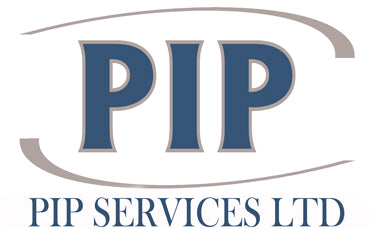When it comes to ensuring health and safety on UK construction sites, few tools are as critical, or as misunderstood, as the Permit to Work (PTW) system. More than just paperwork, a PTW is a formalised safety mechanism that helps prevent accidents, especially during high-risk work.
In this post, we’ll explain what a Permit to Work system is, why it’s important, when it’s legally and practically required, and how construction teams can implement it effectively on site.
What is a Permit to Work System?
A Permit to Work is a formal written system used to control certain types of work that are identified as potentially hazardous. It is a core part of risk management and involves:
- Defining the scope of the job.
- Identifying hazards.
- Outlining control measures.
- Authorising specific personnel.
- Ensuring coordination between teams.
The system requires that certain tasks are only carried out after explicit authorisation and under specific conditions, with regular monitoring throughout.
Legal Context in the UK
The Permit to Work system is not explicitly mandated by law in every circumstance, but it is strongly recommended (and sometimes required) by UK health and safety regulations, including:
- The Health and Safety at Work etc. Act 1974.
- The Management of Health and Safety at Work Regulations 1999.
- The Construction (Design and Management) Regulations 2015 (CDM 2015).
The HSE (Health and Safety Executive) considers a PTW system a vital part of safe systems of work, particularly for high-risk tasks.
When is a Permit to Work Required on UK Construction Sites?
Not every job on a construction site requires a permit. However, PTW systems are typically needed for non-routine, high-risk, or potentially hazardous activities. Key examples include:
1. Hot Work
Any task that involves open flames, sparks, or heat such as welding, cutting, or grinding requires a Hot Work Permit. These activities can easily ignite fires, especially in confined or combustible environments.
2. Confined Space Entry
Working in tanks, sewers, ducts, or any enclosed space with limited access and ventilation is extremely hazardous. A Confined Space Permit ensures proper air monitoring, emergency planning, and safe entry/exit procedures.
3. Work at Height
Although not always requiring a permit by default, complex or risky work at height (especially involving fragile surfaces or unusual equipment) may need a Work at Height Permit to outline controls and rescue plans.
4. Electrical Work
Live electrical work or work on or near high-voltage systems typically demands a Permit to Work to ensure de-energisation, isolation, and lock-off procedures are in place.
5. Excavation Work
Digging near buried services (like gas, water, or electricity) or in unstable ground conditions can pose severe risks. A permit ensures checks are done (e.g. CAT scanning), and safe digging procedures are followed.
6. Lifting Operations
Cranes, hoists, and lifting gear carry the risk of collapse or dropped loads. For complex or critical lifts, a Lifting Permit may be needed to coordinate lifting plans, exclude zones, and trained personnel.
7. Work Near Hazardous Substances
Handling asbestos, chemicals, or flammable substances often requires permits that specify PPE, ventilation, and containment strategies.
Who Issues a Permit to Work?
Permits must be issued by a competent person, usually a site manager or a health and safety officer who understands both the task and associated hazards. The process typically involves:
- An assessment of the risk.
- Implementation of control measures.
- Issuing the permit with clear instructions.
- Sign-off from authorised personnel.
- Continuous monitoring until work is complete.
The person performing the task also needs to sign to confirm understanding, creating a shared accountability loop.
Benefits of a Permit to Work System
Implementing a robust PTW system brings several operational and safety benefits:
- Enhanced Risk Awareness: Workers are made aware of potential hazards and safety measures before starting work.
- Clear Communication: Prevents miscommunication between contractors, subcontractors, and site supervisors.
- Regulatory Compliance: Demonstrates due diligence in case of an inspection or incident.
- Incident Prevention: A proactive tool that prevents injuries and fatalities on site.
Best Practices for Implementing PTW on Construction Sites
- Use Standardised Forms and Digital Systems: Many sites now use digital PTW platforms that streamline record-keeping, alerts, and audits.
- Train All Staff: Everyone involved should understand what permits are, when they are required, and how to follow procedures.
- Integrate with Method Statements and Risk Assessments: Permits should not be standalone; they should align with your method statements and risk assessments.
- Audit Regularly: Conduct spot checks and internal audits to ensure permits are being used properly and not simply tick-box exercises.
- Close the Loop: Ensure permits are formally closed once the task is complete, and that the area is returned to a safe condition.
Conclusion
A Permit to Work system is a powerful tool for managing safety on UK construction sites, especially when dealing with high-risk activities. While not every task needs a permit, knowing when and how to use one is essential to maintaining compliance and protecting lives.
Ultimately, a well-executed PTW system is a mark of a professional, safety-conscious site. Whether you're a principal contractor, site manager, or subcontractor, embracing this process is not just about compliance; it’s about building a culture of safety that lasts.
Why choose PIP Services for your health and safety consultancy?
We’re dedicated to providing the highest level of advice on all Health and Safety related matters and will assist companies in meeting their obligations. We offer a wide range of Health & Safety Services for a variety of clients. We represent many companies and deal with all of their Health & Safety matters.
We’re also an accredited CITB, NEBOSH, IOSH, IWFM & CITB training provider, as well as a ProQual-approved NVQ centre.
We are rated 4.9/5 on Trustpilot, and you can read our reviews here. If you would like to speak to us about your training needs, please get in touch using the button below.

